Language Arts for Infants || Timberdoodle Tiny Tots Kit Review
This post may contain affiliate links, which means I may receive compensation if you make a purchase using one of these links.
Reading to your baby is a daily habit worth establishing. While young infants won’t comprehend stories, they benefit greatly from the contrasting images and vocabulary building.
Through reading, we introduce our kids of all ages to concepts, ideas, and social situations that broaden their horizons. The more words an infant hears, the more language they will develop!
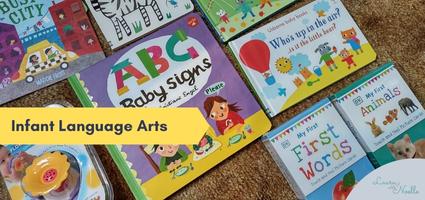
A special thanks to Timberdoodle Company for sponsoring this homeschool series of posts by graciously sending us this complimentary curriculum kit to see what we think. All opinions are our own!
Timberdoodle curriculum kits base infant and toddler language arts on three concepts:
- Talk to your baby
- Read to your baby
- Sign with your baby

Since we have the Birth to 2 Tiny Tots Kit, we have a vast library of enchanting books to read together. While I’ll only be reviewing the infant ones in this blog, I encourage you to check out the toddler ones as well because they include sounds, songs, movement, and more!
Visual Perception Collection

The Tiny Tots handbook encourages the use of these two visual perception board books for tummy time, and we agree–they are great for that! But we also use them for any kind of floor time entertainment. Tummy, back, or side, the black and white pictures with a pop of color on each page engage young eyes.
My son will stare and the visuals, and I love that there are little words or sounds written on the page for me to add some auditory and social stimulation. High-contrast pictures are so great for developing eyesight, and yet I can see these books having a lifespan into the preschool years as they can be used as a tool for storytelling–both by adults and children. This is currently my six-year-old’s favorite thing to do–“read” stories to her baby brother!
We equally enjoy Hello and Animals as they feature people, toys, and critters and little peek through holes on each page.
Indestructibles
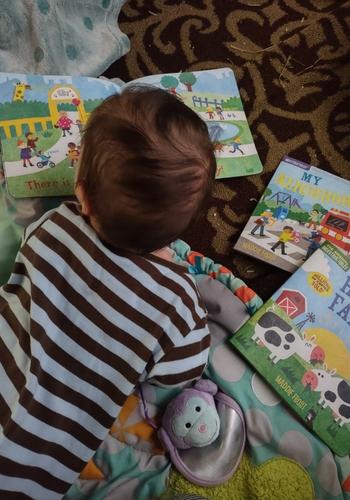
Speaking of storytelling, the set of 3 Indestructibles books are perfect for the creative minds of older siblings, parents, and caregivers to weave tales for bright-eyed babies. I always wanted these books for my first child but never invested in them (wish I had!).
They truly live up to the hype. Made of nontoxic paper-like material that doesn’t rip and can even go in the wash, I have no fear that my baby will destroy these!
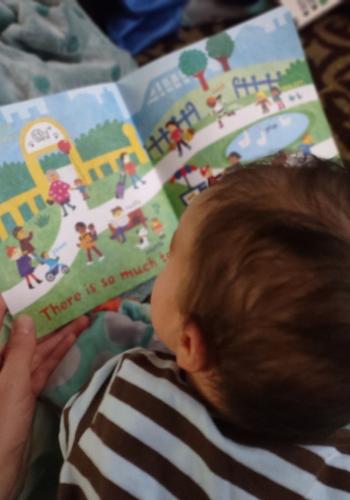
He enjoys looking at the bright pictures and as he grows he can touch, wrinkle, chew, teeth, and drool all over them!
ABC Baby Signs

Baby sign language became mainstream years ago but the tools for families to learn and practice in a simple manner haven’t been easy to come by. I was pleasantly surprised to see that ABC Baby Signs was a colorful, ethnically diverse, sturdy board book featuring 26 words and phrases that are actually a part of a baby’s daily life.
Each page shows step-by-step images of the sign, in addition to a written description of the action alongside a colorful illustration. Because babies learn to control their hands before their mouths, they are able to use sign language to communicate their needs and desires.

ABC Baby Signs can be used as a guide to teach and practice a few words and signs each week. Around 6 months old, it’s recommended to take the baby’s hands and help him to make the sign. By learning sign language, children are encouraged to learn even more words and will feel less frustrated because they are able to communicate earlier with you!
Since my son is too young to begin hand-over-hand signing assistance, I have been focusing on learning the signs myself so that I can show him the pictures and demonstrate the sign, and also use the sign during our daily life. Signs like “all done”, “diaper”, “eat”, “more”, and “sleep” are the ones we are starting with.
Flower Whistle

One of the important pre-speech skills babies learn is how to blow air. Infants as young as 3 months can grasp, chew, and blow air in and out of the Flower Whistle. It’s soft and completely washable, making it a fun teether and a great learning toy.
The whistle provides a baby-friendly noise when air is blown in, or sucked out, so little ones get immediate auditory input for their action. The skill of blowing helps to develop tongue, cheek, jaw, and lip muscles, all of which are important for speech and eating food.

When I handed my 3 month old the Flower Whistle he grasped the soft handles and immediately brought the flower piece to his mouth to chew. Though he can’t blow air yet, he enjoys holding and chewing on all parts of the whistle and I look forward to teaching him how to make noise with it soon!
Touch & Feel Cards

Two boxed sets of touch and feel cards add a pop of sensory to early learning. My First Animals and My First Words each feature 16 cardboard picture cards with a bright picture, an element to touch a feel, and one word to identify the picture. On the back of each card are 4-5 engaging questions to ask your child once they are verbal.
Each card also features how to say the word in four different languages: Spanish, French, German, and Chinese.

Storage for each set is a snap with the sturdy box and velcro fasteners. The sets also come with a note for parents/caregiver card with ideas on simple and advanced games as well as pointers for using the cards with younger and older babies.
My son is 3 months old at the time I’m writing this so we have only pulled these cards out a handful of times. However, I expect that in just a few months, these will become much more interesting to him, and also a perfect engagement tool for big sister to use.
The wipe-clean surface of the cards are fabulous for sticky hands and drooly teethers, and I can’t wait to ask all the fun questions about how the colors look, textures feel, noises, sounds, and more! Some of the questions on the cards are basic, but others are quite challenging, asking where an animal lives or finding other cards in the pack similar to that one. I can see these cards easily spanning the infant to toddler range.
Usborne Baby Books Set

The quality and design of Usborne books always amaze me and this set of 4 Baby Board Books is no exception! This set features creative titles like:
- Where’s the butterfly? …is it in the sky?
- Where’s the little mouse? …is it in the house?
- Who’s up in the air? …is it the little bear?
- Who’s wearing a hat? …is it the orange cat?
The glossy pages are colorful, engaging, and a perfect simple introduction to seek and find books. There is a fun question on each page that older infants and toddlers can begin to answer, but until then, the phrases rhyme and offer engagement between you and your little one, opening their minds to visual perception, reasoning skills, and new vocabulary.
During our daily reading time, my six-year-old often chooses these books because she likes to show baby the answers to the questions. Perfect engagement for siblings of all ages!
Final Thoughts on Language Arts for Infants
Talking, reading, and signing to your infant will provide a solid foundation for early language development that sets them up for a lifetime of learning. Boosting early vocabulary and instilling confidence in communication are truly some of the biggest joys of early parenting.
You can see the entire Birth to Two Timberdoodle kit here.
Related Articles about Homeschooling
- Timberdoodle Tiny Tots Birth – 2 Curriculum Kit Overview (2022-2023 Homeschool Year)
- So You Want to Tot-School?
Want to save Language Arts for Infants || Timberdoodle Tiny Tots Kit Review for later? Pin to your favorite Pinterest board here:
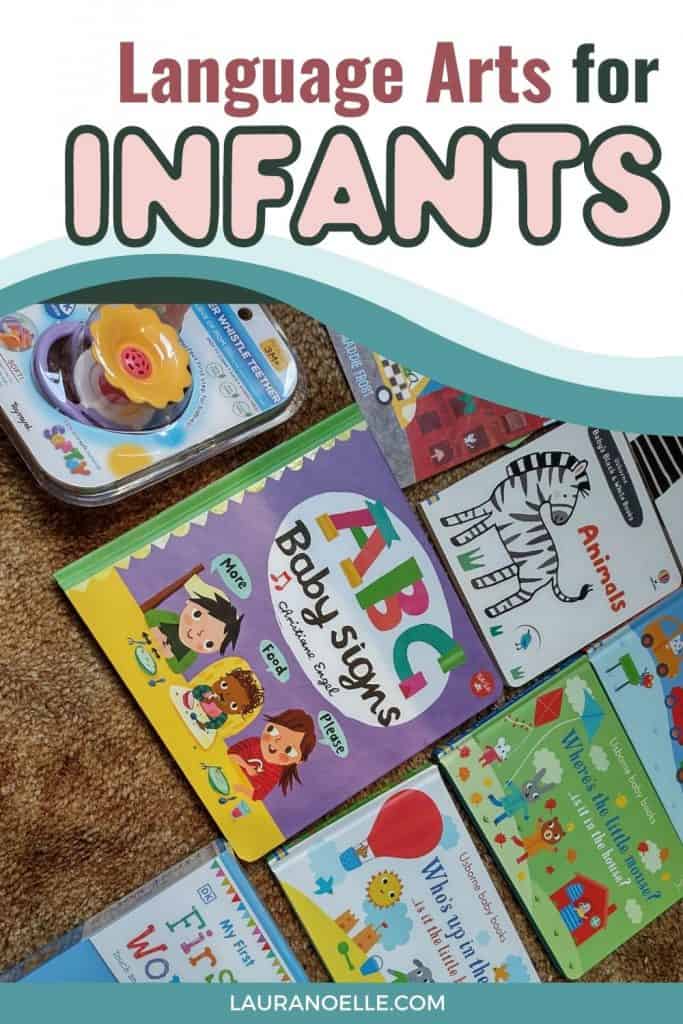

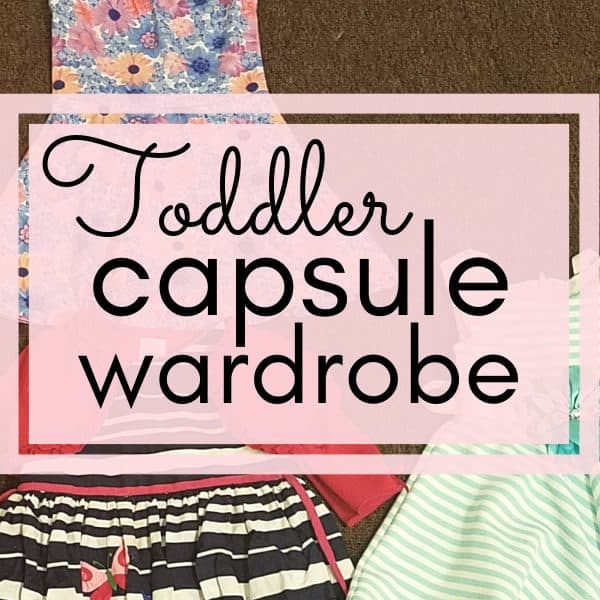
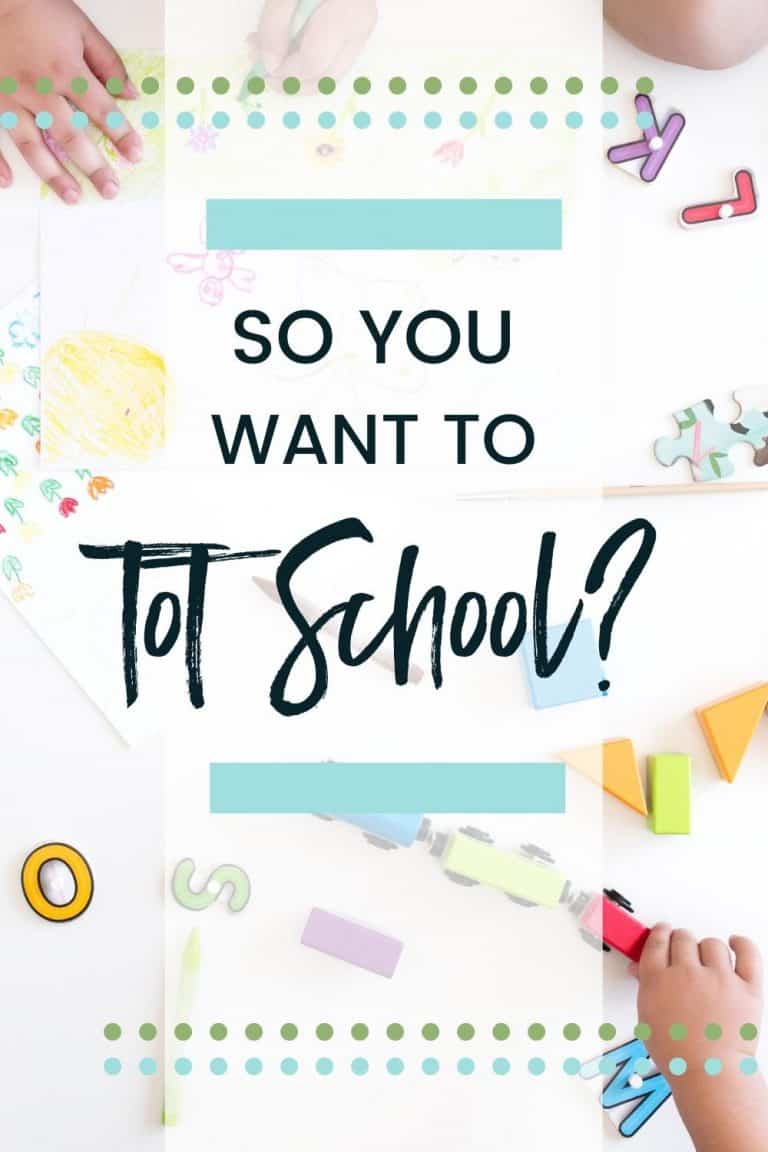
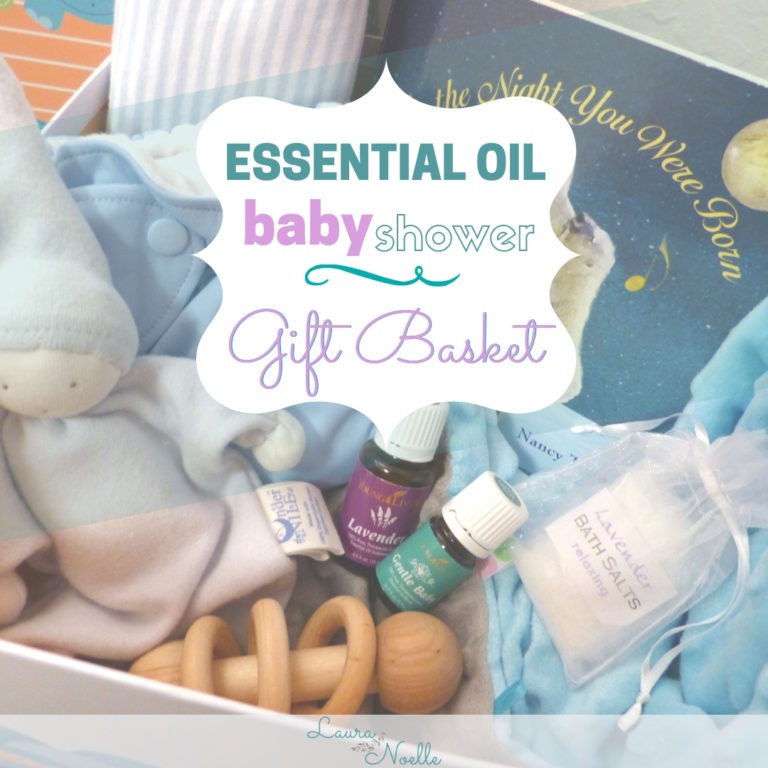
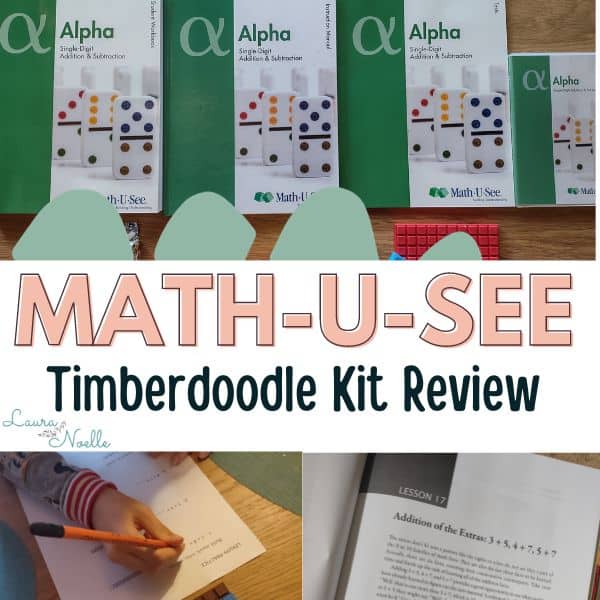
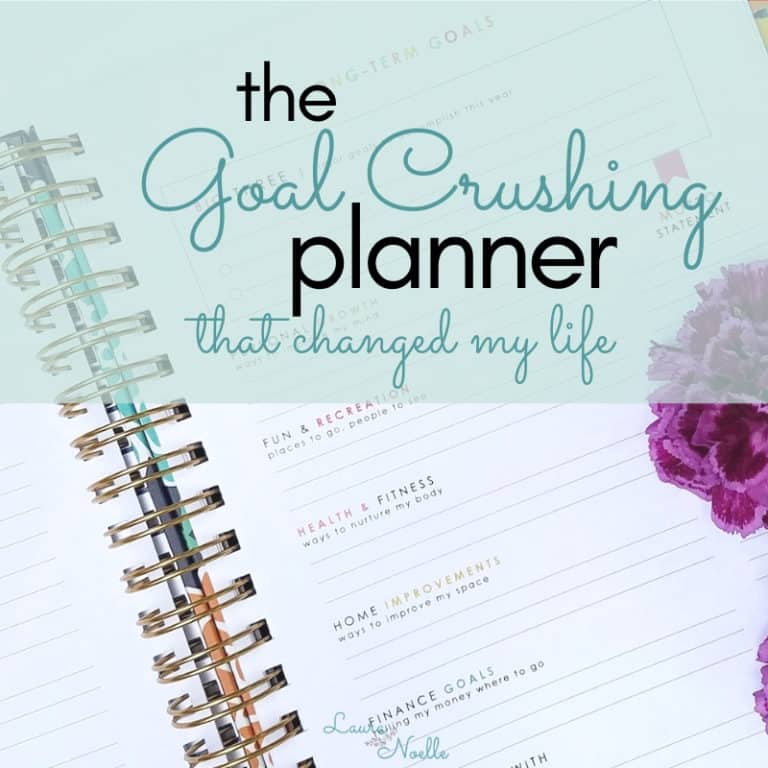
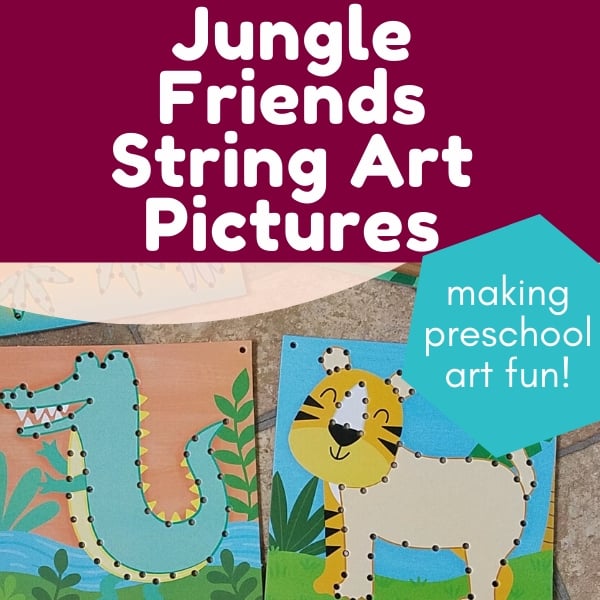
3 Comments